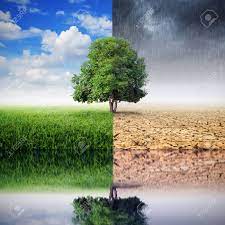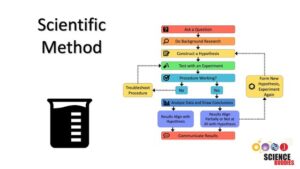Climate change is one of the most critical challenges facing the global community today. It is an issue that affects every part of our planet and impacts all forms of life, including humans, animals, and ecosystems. As global temperatures continue to rise, the effects of climate change are becoming more apparent, with severe weather patterns, shifting ecosystems, and increasing sea levels. Understanding how climate change affects the environment is essential for mitigating its consequences and ensuring the planet’s future.
What is Climate Change?
Climate change refers to long-term changes in the average weather patterns of the Earth. While climate has naturally fluctuated over millennia, recent trends have been caused by human activities, particularly the burning of fossil fuels like coal, oil, and gas. This results in the release of greenhouse gases, such as carbon dioxide (CO2), methane, and nitrous oxide, into the atmosphere. These gases trap heat from the sun, leading to a phenomenon known as the greenhouse effect. As greenhouse gases accumulate, the Earth’s temperature rises, which has wide-reaching consequences on the environment.
1. Rising Temperatures
The most noticeable effect of climate change is the increase in global temperatures. The Earth has already warmed by about 1.1°C since pre-industrial times, and this trend is accelerating. According to scientists, the planet is on track to experience further warming, which will have profound effects on ecosystems, agriculture, water supply, and human health.
Melting Ice Caps and Glaciers: Rising temperatures contribute to the melting of ice caps and glaciers, particularly in the Arctic and Antarctic regions. As glaciers shrink, they contribute to rising sea levels, which can flood coastal cities and ecosystems. The loss of glaciers also threatens freshwater supplies for millions of people who rely on meltwater for drinking and agriculture.
Heatwaves: More frequent and intense heatwaves are a direct result of rising temperatures. Prolonged periods of extreme heat can lead to droughts, water scarcity, and increased wildfires, all of which disrupt local ecosystems and human societies.
2. Shifting Weather Patterns
One of the most significant environmental impacts of climate change is the alteration of weather patterns. As temperatures rise, they disturb the Earth’s natural climate systems, leading to more erratic and unpredictable weather events.
Intensified Storms and Hurricanes: Warmer oceans provide more energy for storms, leading to more powerful hurricanes and typhoons. These extreme weather events can cause extensive damage to coastal areas, forests, and infrastructure, leading to displacement, loss of life, and economic loss.
Changing Rainfall Patterns: Climate change can cause shifts in rainfall patterns, leading to both droughts in some areas and flooding in others. In some regions, increased rainfall can lead to flash floods, while in other areas, reduced rainfall may cause prolonged droughts. These changes impact agriculture, water supply, and biodiversity.
More Severe Winters in Some Regions: While global temperatures are rising, some regions are experiencing colder-than-usual winters. This is a result of disruptions in the jet stream caused by climate change. These cold spells can have devastating impacts on ecosystems and agriculture, particularly in areas unprepared for extreme cold.
3. Rising Sea Levels
One of the most alarming consequences of climate change is the rising sea levels, which are driven by two main factors: thermal expansion of seawater due to warming and the melting of glaciers and ice sheets. As the global temperature rises, ocean water expands and glaciers melt, both of which contribute to higher sea levels.
Coastal Flooding: Rising sea levels threaten coastal communities, putting millions of people at risk. Low-lying coastal areas are especially vulnerable, with the potential for large-scale flooding that could displace populations, destroy homes, and disrupt infrastructure. Major cities like Miami, New York, and Jakarta could face severe flooding as sea levels continue to rise.
Loss of Habitats: The increase in sea levels also endangers coastal ecosystems, including mangroves, salt marshes, and coral reefs. These ecosystems provide critical services such as coastal protection, biodiversity, and carbon sequestration. The loss of these habitats has far-reaching consequences for both marine and terrestrial life.
4. Impact on Biodiversity
Climate change is having a profound effect on biodiversity across the planet. As temperatures rise and weather patterns shift, species are forced to adapt to new conditions. However, many species are unable to cope with the rapid changes, leading to a decline in biodiversity.
Extinctions: Many species, particularly those in vulnerable environments such as coral reefs or polar regions, are facing extinction due to climate change. The disruption of habitats, coupled with the inability to migrate or adapt, makes survival difficult for many species. The loss of biodiversity also has severe consequences for ecosystems, as species play crucial roles in maintaining ecological balance.
Shifting Habitats: As temperatures increase, species are migrating to new areas in search of more favorable conditions. For example, some animals are moving to higher altitudes or latitudes to escape rising temperatures. However, these new areas may not provide the same resources or conditions as the species’ original habitats, leading to challenges in their survival.
Ocean Acidification: Rising CO2 levels are not only warming the atmosphere but also dissolving in the oceans, causing ocean acidification. This disrupts marine life, particularly organisms that rely on calcium carbonate to form shells and skeletons, such as corals, mollusks, and some plankton species. The loss of coral reefs and the decline of these marine species threaten the entire marine food web.
5. Threat to Agriculture and Food Security
The effects of climate change on the environment have significant implications for global agriculture and food security. As weather patterns change, regions that once supported crops may become inhospitable, while other areas may face crop failures due to droughts or flooding.
Reduced Crop Yields: Climate change can reduce crop yields due to heat stress, changing precipitation patterns, and the increased frequency of pests and diseases. Crops such as wheat, rice, and maize, which are staple foods for billions of people, are particularly vulnerable to these changes. Reduced yields can lead to food shortages and higher prices, exacerbating global hunger and poverty.
Water Scarcity: Changes in precipitation patterns, coupled with the overuse of water resources, are causing water scarcity in many regions. Agriculture relies heavily on water for irrigation, and in areas where water is becoming scarce, farmers may struggle to produce enough food to meet demand.
6. Human Health Risks
The environmental impacts of climate change also pose significant risks to human health. Changes in temperature and weather patterns create an environment conducive to the spread of diseases, as well as direct health hazards.
Spread of Infectious Diseases: Warmer temperatures and changing rainfall patterns create ideal conditions for the spread of diseases carried by insects, such as malaria, dengue fever, and Zika virus. As these diseases spread to new areas, populations that have no immunity may be at greater risk.
Heat-related Illnesses: Extreme heatwaves are becoming more common and can lead to heat-related illnesses such as heat exhaustion and heatstroke. Vulnerable populations, such as the elderly, children, and those with pre-existing health conditions, are at a higher risk of heat-related mortality.
Air Quality and Respiratory Diseases: Climate change exacerbates air pollution, particularly in urban areas. The increase in wildfires and the longer duration of the pollen season can worsen air quality, leading to respiratory diseases such as asthma and bronchitis.
Conclusion
The effects of climate change on the environment are vast, complex, and interconnected. From rising temperatures and sea levels to altered weather patterns and threats to biodiversity, the consequences of climate change are being felt worldwide. While the situation is dire, it is not too late to take action. Reducing greenhouse gas emissions, transitioning to renewable energy sources, and adopting sustainable practices are essential steps toward mitigating the impacts of climate change and protecting the environment for future generations. It is crucial that individuals, governments, and organizations work together to address this global crisis, ensuring a healthier planet for all forms of life




